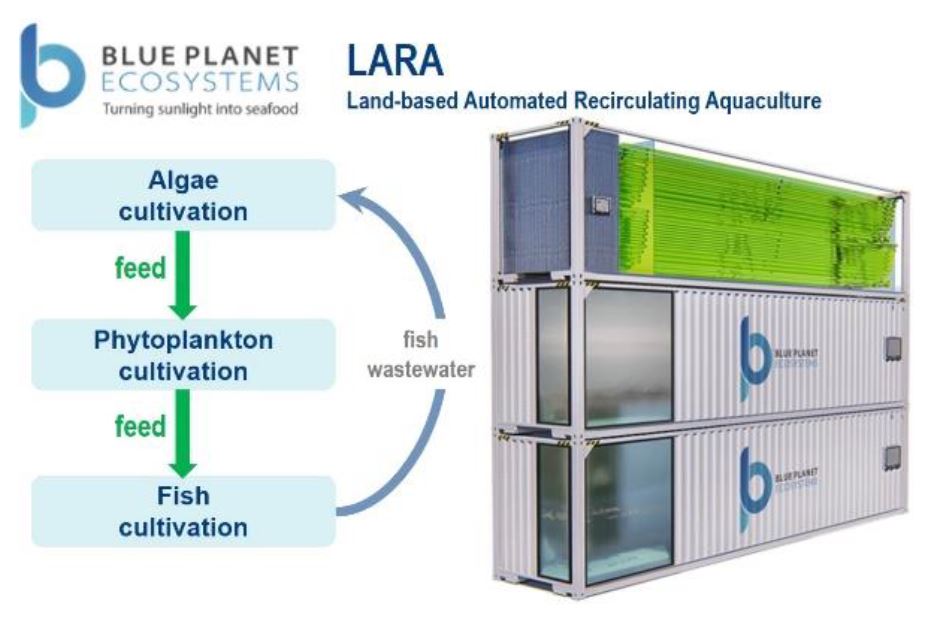CICA - Chlorella in circular aquaculture
Short Description
Starting point / motivation
In order to feed the growing world population, aquaculture must at least double by 2040 - from 106 million tons to over 250 million tons. Securing food production will be one of the biggest problems of the future. However, the necessary rapid development of aquaculture, known as the "blue revolution", is accompanied by a variety of environmental problems, such as habitat destruction, water pollution, eutrophication, biotic depletion and disease outbreaks. The Austrian SME Blue Planet Ecosystems GmbH is developing a novel product, the LARA system (Land-based Automated Recirculating Aquaculture; Figure 1), which converts sunlight into fish in a sustainable manner.
Contents and goals
Project CICA enables the detailed investigation of fish wastewater and its treatment by algae cultivation, as well as the design and construction of the first LARA unit, the photobioreactor. We will investigate
- the variability of fish wastewater as a function of cultivation parameters,
- which analytical instruments are the minimum requirement for measuring and quantifying the components of fish wastewater,
- whether and how the microalgae Chlorella vulgaris can grow on the different fish wastewater batches, CO2 and sunlight, and
- whether the cultivation of Chlorella vulgaris on fish wastewater is feasible in the planned scale of the LARA unit and if so, how this unit must be designed.
Methodological approach
We will analyze the different components in the fish wastewater with several methods to compare detection limits, quantification limits, measurement times, accuracy, precision as well as reproducibility and robustness. In this context, we will perform targeted spiking and depreviation experiments with the fish wastewater. We will use multivariate methods to determine correlations between different analytes. The microalgae Chlorella vulgaris will be cultivated on different fish wastewater batches. Initially this will be done in shake flask screening experiments in shaking incubators with light sources and CO2 addition. Cell growth will be monitored by OD600 measurements over time and samples will be taken daily to analyze the composition of the liquid wastewater media. Following this screening approach, selected experiments are transferred to both a stirred tank and a tubular bioreactor - both at laboratory scale. This will allow a more detailed analysis of the growth and physiology of Chlorella, more data on water quality during and after cultivation and the generation of sufficient biomass for subsequent analysis of biomass composition at an external partner.
Expected results
We will generate an analytical concept for fish wastewater, determine the variability of fish wastewater in the LARA unit, determine the feasibility of mixotrophic cultivation of Chlorella vulgaris on it and calculate a scale-up based on all these data.
Project Partners
Project management
Univ. Prof. Oliver Spadiut
TU Wien
Project partners
Blue Planet Ecosystems GmbH
Contact Address
Univ. Prof. Oliver Spadiut
TU Wien
Gumpendorferstrasse 1A/5.Stock, 1060 Wien
Tel.: +43 1 58801 166420
E-Mail: oliver.spadiut@tuwien.ac.at
www.tuwien.at/tch/icebe/ibdgroup

